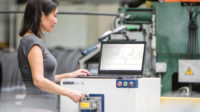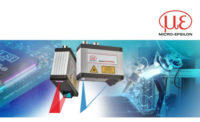Why 3D Measurements Drive ROI
3D scanning is an easy and fast way to measure 3D objects, and it offers highly accurate, precise data.

Manufacturers looking to improve throughput and efficiency can bring precision to their production with 3D measurement technologies.
The right tool can easily integrate with a company’s existing assembly, fabrication tools and technology, requiring little onboarding and integration. It can also deliver powerful, long-lasting ROI.
Manufacturers can begin collecting 3D measurement data by directing light or radiation at an object and capturing its measurements to recreate it. Procuring these detailed 3D dimensions helps manufacturers to rapidly reproduce and redesign products. They can also use the same data to perform quality control and inspection analysis for a rapid “go/no go” decisions. With the field’s growing pressure to introduce new product designs, and as parts become increasingly complex, 3D measurement is increasingly relevant.
When implementing 3D measurement, manufacturers collect data, process it and, use that data to create a model. After choosing between structured light scanners, computed tomography, portable CMMs and optical CMMs, manufacturers then use software to convert their scan data into a coordinate system, which readies the data to become a CAD model. Then, manufacturers can use that CAD file to reverse-engineer their products. With the right software, manufacturers can see their data-engineered parts in 3D. They can ultimately use this to create a precise replica of a complex object.
3D scanning is an easy and fast way to measure 3D objects, and it offers highly accurate, precise data. This helps businesses to simplify product development and rapidly streamline their quality control operations. As quality becomes increasingly automated, 3D scanning is becoming increasingly popular.
Looking for a reprint of this article?
From high-res PDFs to custom plaques, order your copy today!







